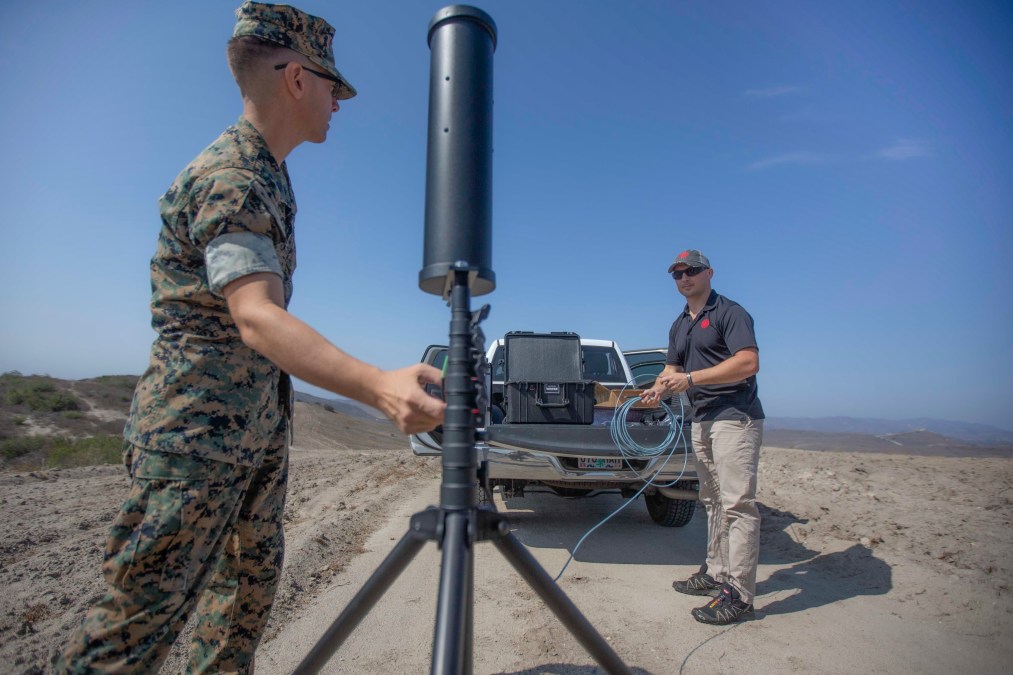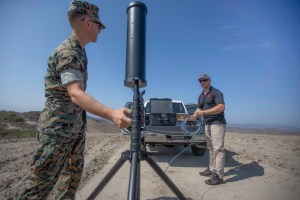DOD CIO hiring new spectrum policy deputy directors

The Department of Defense‘s IT shop plans to hire new deputy directors to improve electromagnetic spectrum management as Pentagon leaders dedicate more resources to the issue.
The new deputy directors will be GS-15s and oversee lines of efforts identified in the Electromagnetic Spectrum Superiority strategy. The changes to the CIO’s office come amid a broader push within DOD to focus on the use of spectrum as leaders recognize it will be foundational to new network-based technologies like 5G.
“Of the seven things I pay close attention to, this is one of them,” Kelly Fletcher, who is preforming the duties of CIO while John Sherman awaits confirmation by the Senate, said. “This is new that spectrum is a key topic among senior leaders,” she said while speaking at the Association of Old Crow’s annual symposium.
Speaking alongside Fletcher at the symposium, Deputy CIO for Command, Control and Communications Fred Moorefield said spectrum management is crucial for the Joint All Domain Command and Control (JADC2) concept, as well as being critical for the implementation of 5G.
“JADC2 requires dynamic, resilient, adaptive communications,” Moorefield said. That can’t happen without stronger use of spectrum, he said.
JADC2 is DOD’s plan to network together air, land, sea, space and cyberspace operations through a network-of-network that allows for seamless communications between services.
Moorefield and others acknowledged for the past 20 years, DOD has not had to contend with adversaries technically savvy enough to compete for spectrum space or jam radios at scale. Now there is a race for DOD to regain atrophied practices.
“This is one of the most difficult efforts in DOD,” Moorefield said. “There are so many things we are doing in this space.”
DOD also stood up a new governance body called the Command, Control and Communications Leadership Board, with officials from the offices of the CIO, acquisition and sustainment, research and engineering and Joint Staff’s J-6. The board oversees the implementation plan’s 117 tasks, DOD CIO spokesperson Russ Goemaere said.
Spectrum Sharing
One of the policy changes on spectrum is an increased focus on sharing frequency ranges with commercial industry. DOD has been auctioning off ranges of the spectrum that it previously had sole authority to use, and more space may become available to industry soon, Fletcher said.
“Spectrum sharing is absolutely where we are going,” She said.
After Fletcher’s talk at AOC, the DOD announced a new spectrum sharing experiment at Hill Air Force Base in Utah. The base will serve as a testing group on how a 5G network operated by a private company can operate in the same space as airborne radar systems, an operations that could cause interference to sensitive military systems as both systems operate in the 3.3-3.45 GHz band and the 3.1-3.45 GHz bands.
The experiment is similar to other “testbed” experiments where DOD is offering its bases as places for commercial companies to test new 5G tech. The DOD has issued more than $500 million in awards for these type of contracts.






